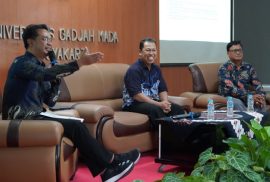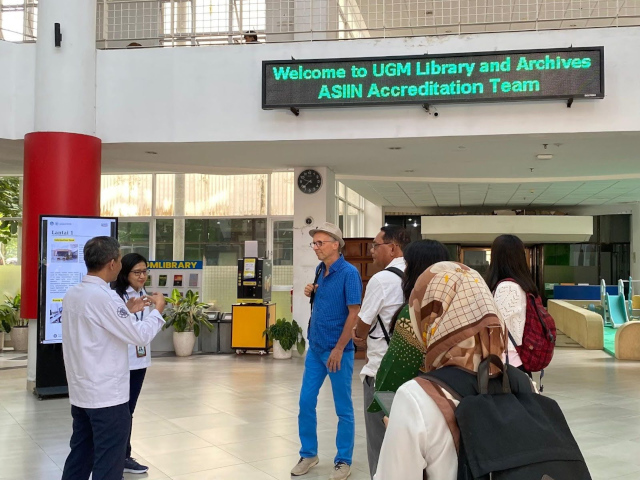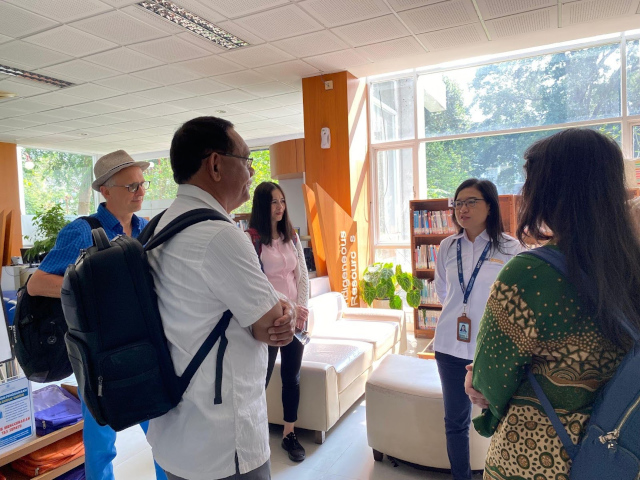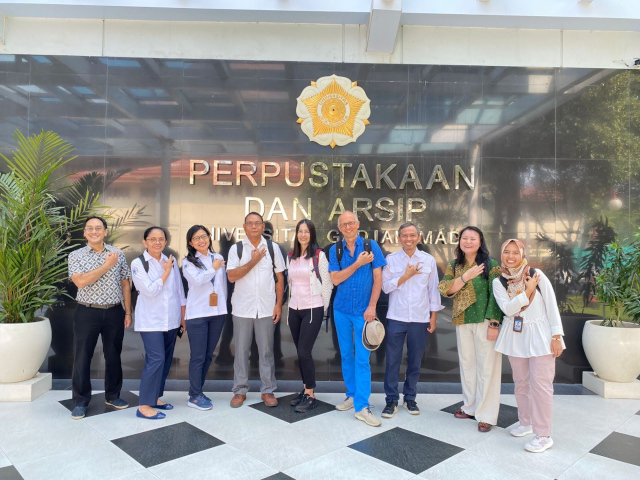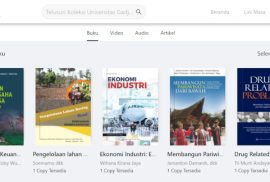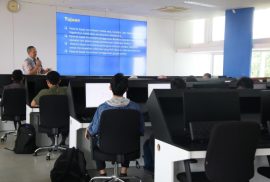 A vibrant cultural atmosphere filled the Universitas Gadjah Mada (UGM) campus in celebration of the 58th Anniversary of the Faculty of Philosophy. As part of the festivities, the Gamelan Festival was held on Saturday–Sunday, July 19–20, 2025, featuring dozens of gamelan ensembles from various UGM units and cultural communities across the Special Region of Yogyakarta (DIY).
A vibrant cultural atmosphere filled the Universitas Gadjah Mada (UGM) campus in celebration of the 58th Anniversary of the Faculty of Philosophy. As part of the festivities, the Gamelan Festival was held on Saturday–Sunday, July 19–20, 2025, featuring dozens of gamelan ensembles from various UGM units and cultural communities across the Special Region of Yogyakarta (DIY).
 In the midst of life’s complexities and exhausting routines, finding happiness can be a challenge. But happiness does not belong only to a perfect life. This is the central theme of the book discussion on “Tetap Bahagia Meski Hidup Tidak Baik-Baik Saja” (Still Happy Even When Life Isn’t Going Well), written by Setyo Hajar Dewantoro, and organized by UGM Library and Archives in collaboration with Mahadaya Publishing on Friday (July, 11).
In the midst of life’s complexities and exhausting routines, finding happiness can be a challenge. But happiness does not belong only to a perfect life. This is the central theme of the book discussion on “Tetap Bahagia Meski Hidup Tidak Baik-Baik Saja” (Still Happy Even When Life Isn’t Going Well), written by Setyo Hajar Dewantoro, and organized by UGM Library and Archives in collaboration with Mahadaya Publishing on Friday (July, 11).
 Two staff members from the Library and Archives of Universitas Gadjah Mada (UGM), Afni Isnaini Aprilia (Faculty of Law) and Uminurida Suciati (Faculty of Animal Science), have been selected to receive scholarships for the “Transforming University Libraries Leadership & Innovation Programme (TULLIP)”. They follow in the footsteps of their colleagues who previously received similar scholarships through the TULLIP Intake 1 program organized by the National University of Singapore (NUS) Libraries, held from June 30 to July 4, 2025.
Two staff members from the Library and Archives of Universitas Gadjah Mada (UGM), Afni Isnaini Aprilia (Faculty of Law) and Uminurida Suciati (Faculty of Animal Science), have been selected to receive scholarships for the “Transforming University Libraries Leadership & Innovation Programme (TULLIP)”. They follow in the footsteps of their colleagues who previously received similar scholarships through the TULLIP Intake 1 program organized by the National University of Singapore (NUS) Libraries, held from June 30 to July 4, 2025.
The Library and Archives of Universitas Gadjah Mada (UGM) continues to expand its network of strategic collaborations with regional partner institutions. Most recently, this partnership was formalized through the signing of a Cooperation Agreement (PKS) with the Yogyakarta City Library and Archives Service (DPK), held on Tuesday (July 8) at the 3rd Floor Meeting Room of the Yogyakarta City Library, Jl. Suroto No. 9, Kotabaru.
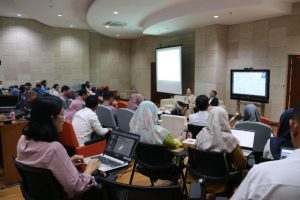 Improving the quality and impact of scientific publications has become a strategic priority for the academic community. As a concrete form of support for this agenda, the UGM Library and Archives in collaboration with Springer Nature held a workshop titled “Guide for Academic: from Research to Publication” on Monday, June 30, 2025. The event took place at the Auditorium of the Tahir Foundation Building, Faculty of Medicine, Public Health and Nursing (FKKMK) UGM, and was attended both onsite and online by students, lecturers, education staff, and researchers from various faculties across UGM.
Improving the quality and impact of scientific publications has become a strategic priority for the academic community. As a concrete form of support for this agenda, the UGM Library and Archives in collaboration with Springer Nature held a workshop titled “Guide for Academic: from Research to Publication” on Monday, June 30, 2025. The event took place at the Auditorium of the Tahir Foundation Building, Faculty of Medicine, Public Health and Nursing (FKKMK) UGM, and was attended both onsite and online by students, lecturers, education staff, and researchers from various faculties across UGM.
The Library and Archives of Universitas Gadjah Mada (UGM) has once again held the Literacy Class on Effective Search Strategies for Multi-Subject Databases, continuing a series of successful training sessions conducted previously. The two latest sessions focused on the use of Springer Nature on Tuesday, June 24, 2025, and Sage Journals on Thursday, June 26, 2025. Both sessions took place in the Computer Laboratory, Building L1, 5th Floor.
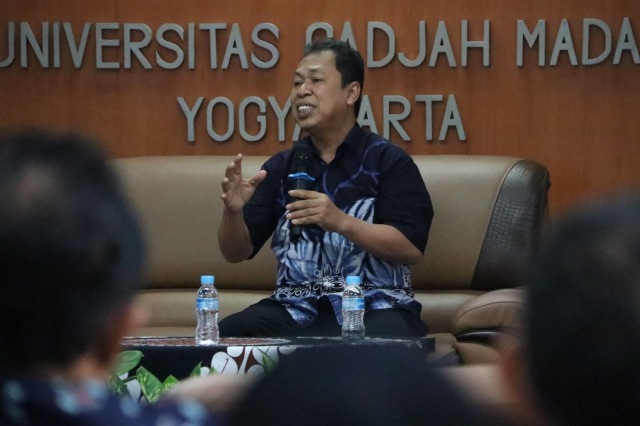 How does Pancasila live on the people’s campus and respond to the challenges of the times? This question served as the main thread in the archival talk show themed “Pancasila and the People’s Campus: UGM in the Trajectory of History and the Future”, organized by the UGM Library and Archives in collaboration with the UGM Museum, on Thursday (June 26). The event was held in the Seminar Room, 2nd Floor, Building L1, and was part of the series of activities in the Gadjah Mada Library and Archives Fair (GMLAF) 2025.
How does Pancasila live on the people’s campus and respond to the challenges of the times? This question served as the main thread in the archival talk show themed “Pancasila and the People’s Campus: UGM in the Trajectory of History and the Future”, organized by the UGM Library and Archives in collaboration with the UGM Museum, on Thursday (June 26). The event was held in the Seminar Room, 2nd Floor, Building L1, and was part of the series of activities in the Gadjah Mada Library and Archives Fair (GMLAF) 2025.
Yogyakarta, June 24, 2025 – Imagine a library you can carry anywhere, anytime, complete with an e-book collection, social features, and an online borrowing system. Universitas Gadjah Mada (UGM) Library and Archives has turned that vision into reality with the launch of SIDILA (Sistem Informasi UGM’s Digital Library), a digital library application designed to meet the learning needs and challenges of today’s generation.
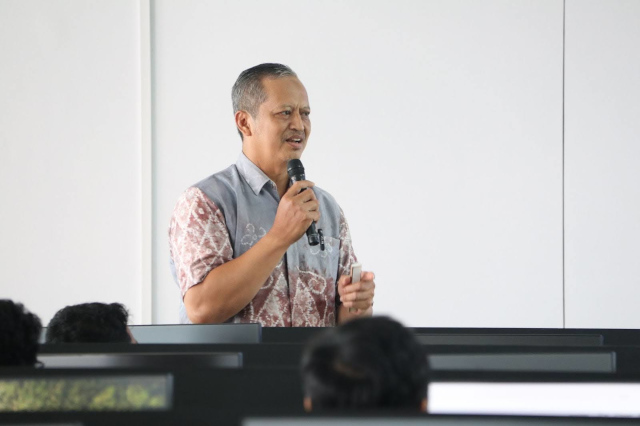 The Library and Archives of Universitas Gadjah Mada (UGM) once again hosted its June edition of the Literacy Class, spotlighting a topic highly relevant to the academic community: Effective Search Strategies in Multi-Subject Databases. Held in the Computer Lab, Building L1, 5th Floor, on Tuesday (June 3), this session provided a learning space for UGM students, lecturers, academic staff, and researchers to sharpen their skills in efficiently and purposefully accessing international scientific references.
The Library and Archives of Universitas Gadjah Mada (UGM) once again hosted its June edition of the Literacy Class, spotlighting a topic highly relevant to the academic community: Effective Search Strategies in Multi-Subject Databases. Held in the Computer Lab, Building L1, 5th Floor, on Tuesday (June 3), this session provided a learning space for UGM students, lecturers, academic staff, and researchers to sharpen their skills in efficiently and purposefully accessing international scientific references.







